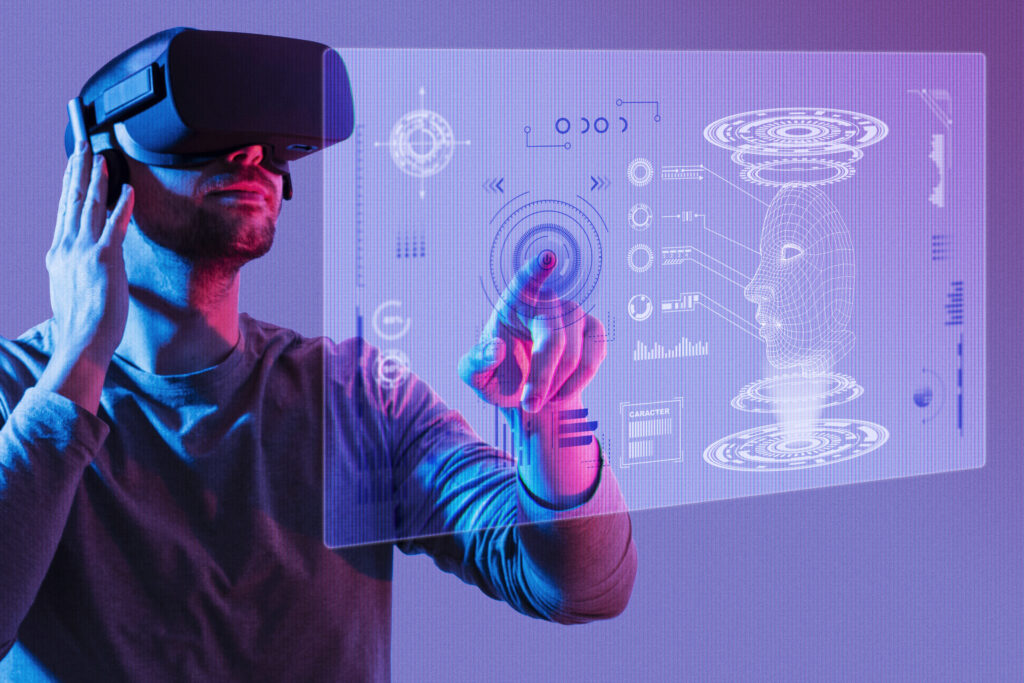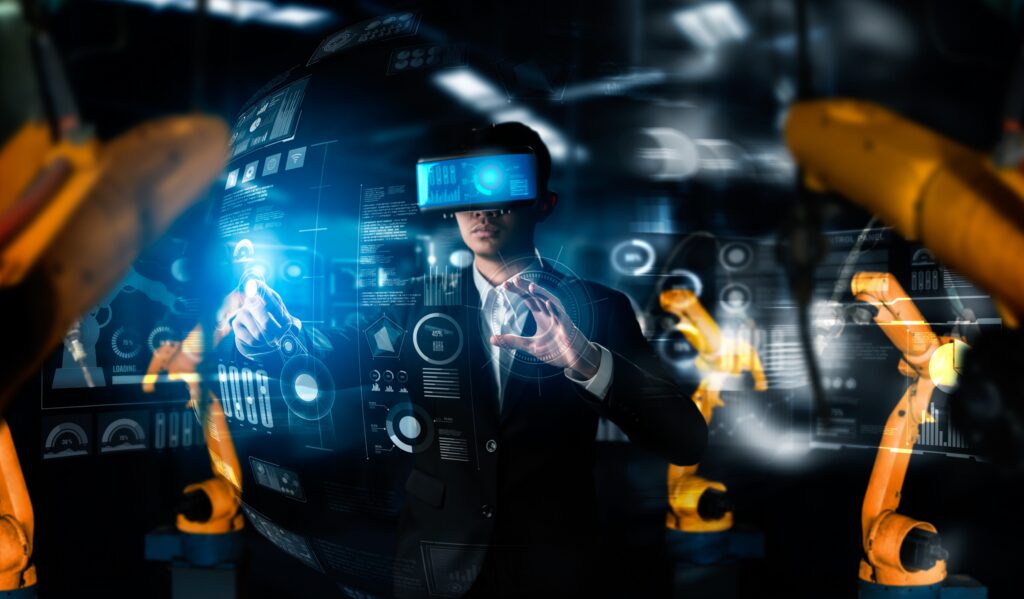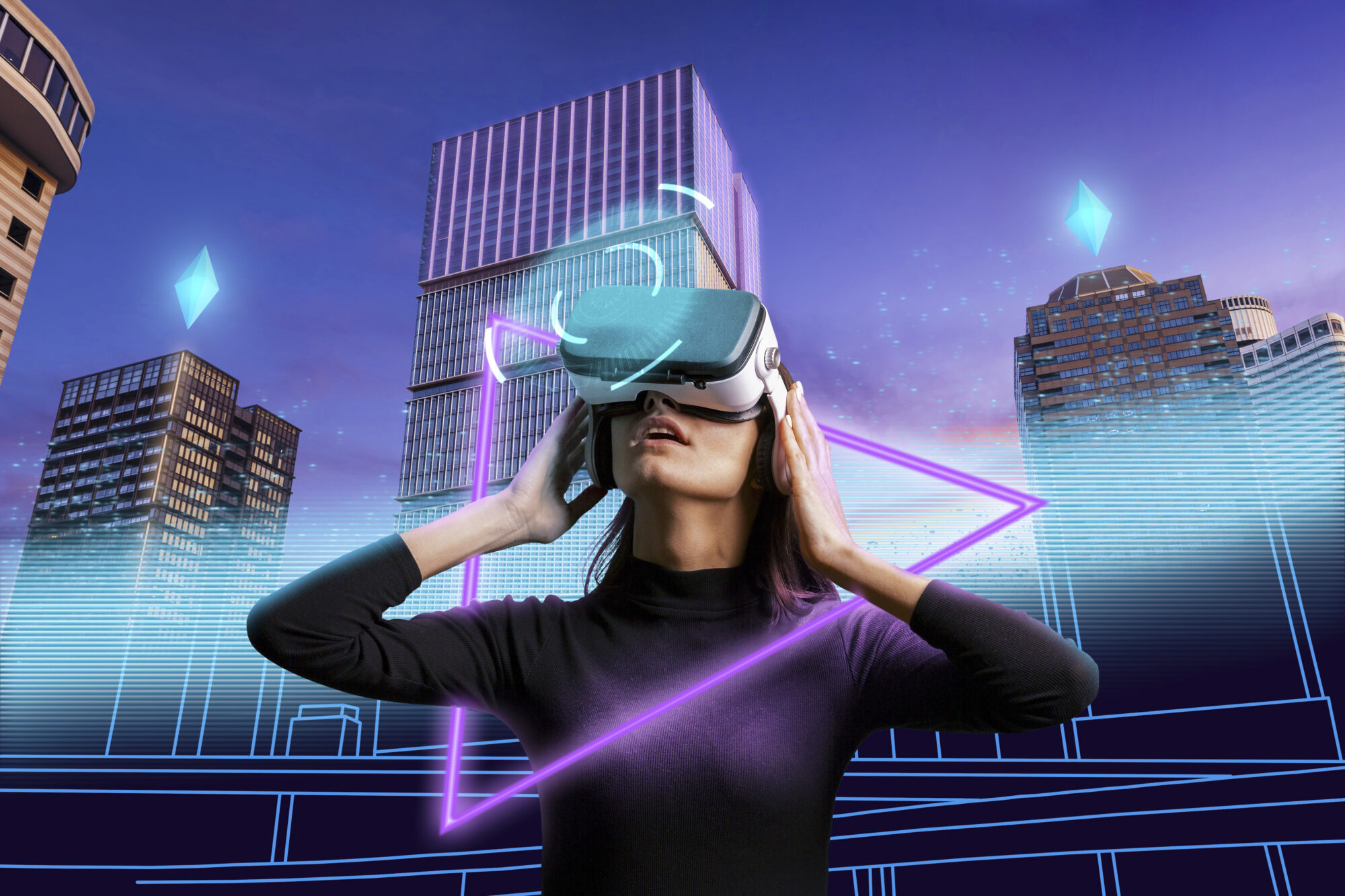In the rapidly evolving digital technology landscape, two buzzwords have dominated the conversations: the Metaverse and Augmented Reality (AR). While each technology represents a significant leap forward, their intersection presents an unprecedented industry opportunity. This article explores how the amalgamation of the Metaverse and AR shapes a new frontier for industrial innovation.
Understanding the Metaverse and Augmented Reality
Before delving into their intersection, it’s crucial to understand what these technologies entail. The Metaverse is a collective virtual shared space created by the convergence of virtually enhanced physical and digital reality. It’s a space where users interact with a computer-generated environment and other users.
On the other hand, Augmented Reality enhances our real-world environment by overlaying digital information onto it. Unlike virtual reality, which creates a wholly artificial environment, AR adds to the existing world as it is.
What is the Metaverse Concept?
The Metaverse is a term used to describe a collective virtual shared space created by the convergence of virtually enhanced physical reality, Augmented Reality (AR), and the internet. It’s often seen as a form of a digital universe consisting of multiple interconnected virtual spaces and environments.
Here are some critical aspects of the Metaverse:
- Virtual Worlds: The Metaverse comprises various virtual worlds where users can explore, interact, and experience things as they would in the physical world but within a digital setting. These worlds are often immersive and can be accessed via virtual reality (VR) headsets, AR devices, computers, or smartphones.
- Interactivity and Immersion: The Metaverse’s defining feature is its high level of interactivity and immersion. Users can create avatars, interact with other users, and engage in various activities, from socializing and gaming to attending virtual events and conferences.
- Economic Systems: The Metaverse supports its economies. Users can buy, sell, and trade goods and services using digital currencies. This can include virtual real estate, digital goods, and services that exist entirely within the Metaverse.
- Integration of Physical and Digital Worlds: The Metaverse blurs the line between the physical and digital worlds. It integrates aspects of the natural world, like real-time data and physical appearances, into virtual experiences and vice versa.
- User-Generated Content: Much of the Metaverse’s content is created by its users. This includes everything from virtual buildings and landscapes to digital art and interactive experiences.
- Persistent and Evolving: The Metaverse is persistent, meaning it continues to exist and evolve even when you’re not logged in. It’s a collection of isolated experiences and a continuous, ever-changing space.
- Accessibility and Connectivity: Ideally, the Metaverse is accessible through various devices and platforms, allowing a broad range of users to connect from different technological access points.
In summary, the Metaverse represents a vision of a fully realized digital world that parallels our physical reality, offering immersive, interactive, and interconnected virtual experiences. It’s a concept that extends beyond gaming or social media, encompassing aspects of economics, identity, and digital-physical integration. It points towards a future where our digital and physical lives become increasingly intertwined.

presentation to try
Nsflow in action
What is Augmented Reality?
Augmented Reality (AR) is a technology that enhances the real-world environment by overlaying digital information, such as images, videos, 3D models, or data, onto it, unlike virtual reality (VR), which immerses users in a completely computer-generated environment, AR supplements and enhances the physical world as it exists. AR is typically experienced through smartphones, tablets, AR glasses, or headsets.
Here are some key characteristics and features of Augmented Reality:
- Real-Time Interaction: AR provides real-time interactions with digital elements superimposed onto the real world. Users can see and interact with these digital objects as part of their physical surroundings.
- Markerless and Marker-Based AR: AR can be markerless, recognizing objects or features in the real world without needing specific markers or symbols. Marker-based AR, on the other hand, relies on predefined markers to trigger digital overlays.
- Applications: AR has a wide range of applications across various industries. It’s used in gaming (e.g., Pokémon Go), navigation apps (e.g., AR navigation overlays on a map), education (e.g., interactive learning experiences), healthcare (e.g., medical visualization), and industrial settings (e.g., maintenance and training).
- Spatial Awareness: AR often involves spatial mapping and understanding. It uses sensors and cameras to detect the user’s environment and accurately place digital content within it. This enables realistic and context-aware interactions.
- Hands-Free AR: Some AR devices, like AR glasses, allow for a hands-free AR experience. Users can view digital information without holding up a smartphone or tablet.
- Augmented Data Visualization: In business and industry, AR is used to visualize complex data in an easily understandable way. For example, it can overlay real-time data and statistics onto factory equipment or visualize architectural plans in a physical building.
- Training and Simulation: AR is valuable for training, especially in fields where hands-on experience is essential. It can simulate real-world scenarios, providing trainees with immersive, interactive learning experiences.
- Marketing and Advertising: AR is utilized in marketing campaigns to create interactive and engaging advertisements. Customers can scan products and access additional information or experiences using their smartphones.
- Accessibility: AR has the potential to enhance accessibility by providing real-time information to users. For example, it can assist individuals with visual impairments by describing their surroundings through audio or text overlays.
- Ongoing Advancements: AR technology continues evolving, with continuous hardware and software improvements. This includes advancements in gesture recognition, object recognition, and more realistic rendering of digital objects in the real world.
In summary, Augmented Reality enhances the real world by adding digital content and information, creating interactive and immersive experiences that have applications across a wide range of industries and use cases. It has the potential to revolutionize how we interact with and perceive our physical surroundings, making it a significant technology in the digital transformation era.
Check out the use and features of Nsflow

The Intersection: Enhanced Industrial Applications
In digital transformation, the convergence of the Metaverse and Augmented Reality (AR) is a beacon of innovation, particularly for industrial applications. This intersection is a revolutionary approach to redefining how industries operate, design, and interact with their machinery and clientele. In this segment, we will explore how the fusion of the Metaverse and AR is not just reshaping the technological landscape but is fundamentally altering the industrial world.
This intersection brings forth an array of applications that were once the realm of science fiction. From enhancing real-time data visualization on the factory floor to enabling global collaboration in virtual spaces, the combined power of the Metaverse and AR sets new benchmarks in efficiency, safety, and productivity. We will explore how these technologies transform critical aspects of industrial operations, such as design, training, maintenance, and customer engagement.
As we navigate these advancements, we must understand that this is more than a technological upgrade; it’s a strategic shift towards a more interconnected and immersive industrial future. The fusion of the Metaverse and AR is opening doors to possibilities that will propel industries forward and redefine how we perceive the interaction between the digital and physical realms in an industrial setting.
Real-Time Data Overlay
The fusion of the Metaverse and AR in an industrial context allows for real-time data overlay onto physical industrial environments. For example, AR can project performance metrics, maintenance data, and interactive 3D models onto machinery in a manufacturing plant. This integration not only streamlines the workflow but also enhances safety and efficiency.
Remote Collaboration and Training
The Metaverse aspect introduces an element of connectivity and shared experiences. It enables remote collaboration in a virtual space that mimics physical presence. Imagine technicians in different geographical locations working together in a virtual replica of a factory, troubleshooting issues or sharing expertise. This capability is also invaluable for training purposes, offering immersive, hands-on experiences without the constraints of physical location.
Enhanced Design and Prototyping
Integrating AR within the Metaverse enables more sophisticated design and prototyping capabilities. Engineers and designers can interact with their 3D models as physical objects, manipulating them in real time. This speeds up the design process and allows for more accurate and tangible representations of the final product.
Predictive Maintenance and Efficiency
The combination of AR and the Metaverse offers predictive maintenance advantages. By overlaying historical data and predictive analytics on equipment, companies can anticipate failures before they occur, reducing downtime and saving costs. Moreover, this intersection facilitates a more sustainable approach to resource management, optimizing energy use and reducing waste.
Customized Consumer Experiences
Lastly, this fusion is not just about internal industrial processes. It extends to how companies interact with their customers. Customized AR experiences, rooted in the Metaverse, can offer unique, interactive ways for customers to engage with products, even before they are manufactured.

Challenges and Considerations
Integrating the Metaverse and AR into industrial applications is challenging despite the potential. Concerns around data security, privacy, and the need for substantial investments in technology infrastructure are pivotal. Additionally, a learning curve is associated with these technologies, necessitating ongoing training and support.
Conclusion
The intersection of the Metaverse and Augmented Reality is more than just a technological trend; it’s a paradigm shift in how industries operate and innovate. For companies in the Augmented Reality space, especially those catering to industrial clients, this intersection offers possibilities for creating more efficient, safe, and engaging work environments. As we enter this new era, it’s essential to navigate these technologies thoughtfully, ensuring they enhance, rather than complicate, the industrial processes they are meant to transform.
Are you interested in using Augmented Reality? Take advantage of the free 14-day trial!



















